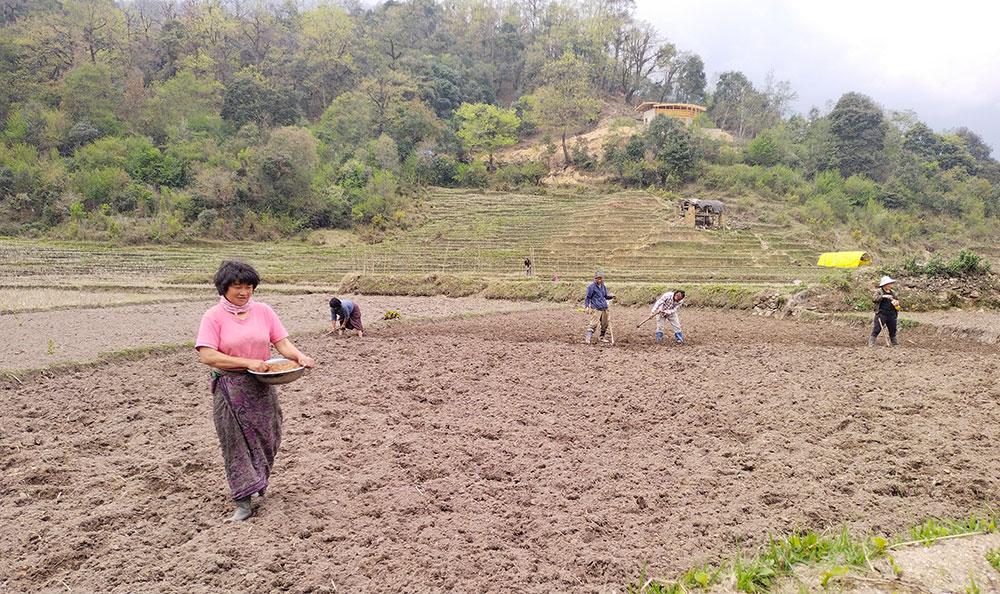A collaborative effort to empower communities and conserve cranes in Bumdeling
Neten Dorji
Trashiyangtse—Initiatives to safeguard the habitat of the endangered black-necked cranes and its habitat has come as a boon for communities in Bumdeling in Trashiyangtse.
For decades, the Royal Society for the Protection of Nature (RSPN) and Bumdeling Wildlife Sanctuary (BWS) have worked closely with the local community in Trashiyangtse to safeguard cranes through innovative approaches such as paddy cultivation and restoration of paddy fields.
The support for land management and electric fencing has benefited the community. About 51.6 kilometres of electric fencing was constructed around abandoned paddy fields, which serve as the crane’s crucial feeding grounds.
Locals said the installation of electric fencing has encouraged many farmers to cultivate more crops in their land.
“The electric fencing and restoring paddy fields enhanced livelihoods of local communities who abandoned their fields because of human-wildlife conflict and the support of electric fencing,” said one.
About 156 households received electric fencing support between 2018 and 2023, leading to the reclamation of about 29 acres of land, according to Bumdeling Wildlife Sanctuary officials.
Tshering Yueden, a mother from Bumdeling, said the fencing secured the crops and enabled them to at least reap 90 percent of the harvest. “Farmers can also earn cash income by selling rice thereby improving their economic prospects.”
Another farmer, Tshewang, is grateful to the RSPN’s efforts to conserve cranes and promote the sustainable use of the important wetlands. “Many would have left their land to fallow otherwise,” he said.
The other benefit to the local community is through tourism.
Bumdeling homestay owner, Thukten Tshering said tourists visiting Yangtse to watch cranes benefited them. “Although no tourists have arrived at my place since 2020, I am still catering to officials visiting the village,” he said.
He said the park initially gave budgetary support to build toilets, establish homestays and an individual from a household with a homestay was trained in housekeeping and cooking.
A conservationist with BWS said that cranes need fallow or post-harvest farmland as their roosting sites. He said that the changing attitude of the people seeking development would affect the long-term survival of the habitat and the birds.
National coordinator for crane conservation from the RSPN, Jigme Tshering, said they also initiated the crane festival to enhance local livelihoods through tourism.
Bumdeling Gup Mani Dorji said that before the wetland was restored, RSPN provided the communities with electric fencing to created awareness in conservation of crane
“In their efforts to conserve the black-necked crane, RSPN ensured that the community was not left behind,” said gup Mani Dorji.
Meanwhile, Trashiyangtse dzongkhag received Nu 3 million from UNDP-GEF ecotourism to conserve biodiversity and enhance the habitat of cranes. The dzongkhag is planning to revive the abandoned paddy fields to increase food sources for wildlife.


